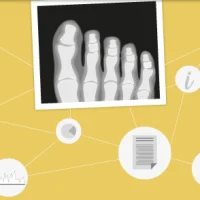HealthManagement, Volume 18 - Issue 1, 2018
The American experience and perspective
ProfessorStephenBakergivesanoverviewofwomen’splaceinradiologyandhow timesare changing.
When I write this, and no doubt months later if and when you read it, the matter of women’s place in society will remain centre stage. Inthewest,atleast, therehasbeenan insistent awareness oftheircollectivelackofopportunity,lackof respect andalsoalackofprotectionin ahitherto male-dominated society.Insome regard thepertinentissuestobemediatedifnotresolved areobvious,inothercontextsthe impingements arelessobviousandneed to bebetterappreciated beforetheycanbeeffectivelycorrected.
Yet in each country, particularities ofhistory,
cultureandpolicyengendervariationsinthe characteristicsofthenatureofinequality.Thus,although itmaybeusefultogeneraliseI focusmy comments onwhatiknowbest ieAmericanmedicine and,to thepoint,AmericanRadiology.
A firstplacetolookisresidency education.As thepercentageofwomen medicalstudentshas risento nearly50percentsotoohasfemalerepresentation increased proportionallyinnearly all specialtyprogrammes,surgicalaswellasmedical.
Infact,in arecentstudyofours,urologywasmost rapidlyexpanding itscadre ofwomentrainees. But onespecialtyisnot increasingitscomplementof women.Forthepast15yearsitsfemale presence as trainees hasstabilised between25and27percent perannum. Thenon-intuitive,infact,perplexing outlierisradiology.
Whyis this so?Manyexplanations havebeenprofferedfor thisapparentanomaly.Towit:womenare notgoodatphysics,theydon’twanttobesubject toradiation, theleadaprons theyhavetowearare tooheavy.Inasurveyofwomen radiologists,we conductedseveralyearsago,noneofthese choices wereregardedasexplanationsforthelimitation.But onefactordidemergeinqueries ofboth current radiologyresidents andthosewhoconsideredradiologybutchose todosomethingelse.Amongthem the predominantnegativefactorwasthe perceptionbyfamilyandfriendsthatyoungfemaledoctors should choosetopursueastheir life’s workapatient-centred discipline. Manylaypeople donotthinkthat descriptionpertains toradiology.Also,today,the spectreofAI inroads indiagnosiswillbeardirectly ontheownership
ofopportunityinimaging,which isaworrisomeconsiderationfor
perspectiveresidents,menandwomenalike.
One wouldexpectthat pathology,too,wouldbe lesshighlyregarded because ofitsfurtherremoteness from patient/doctor interaction.Yet the percentageoftraineesin
thisspecialtycontinues toenlarge,butinthe USA,manyofthesetrainees are notnative bornorare foreigners whohave come toourprogrammestogainskillsand then aremandatedtoreturnhome. Alargepercentage ofthemarefromSouthandEast Asia,wherethey havetoldus,thebiases
fordirectpatient careisnot partofthe compellingnarrativefamiliespresentto guidecareer choice.
Onceboardcertifiedandoutofpractice,women radiologistsintheaggregatetendtoself-selector bechannelledto certainsub-specialties,particularlybreastandpaediatricradiologywhichtend to limitworklocationstomammographyoffices and hospitals, particularly children’s hospitals. Yet all sub- specialtiesnowhave,Ipresume,adequate female representationor, atleastovertrestrictionsarenot prominent.Inacademic practice,however,adisproportionate numberof womenbecome supervisorsof medicalstudent teachingorresidency programme directors.Bothareimportanttasksbut theirtime commitmentretardsresearch productivity.Andthe sizeof one’s C.V.isstill agoodindicatorof advancementuptheacademicladder.
Womencompromiseonly15percent offulltime radiologistsinprivatepracticeintheUS. Partof the differencebetween percentageinresidency andpercentageinpracticeisthat femaleradiologistsover50arelesscommon thanthosewhoare younger.Also, womenradiologists aremorelikely to workpart-timethanmen.
Amongtheofficersofthenationalleadershipof ourspecialty,womenarenolonger rarebuttheyare lowerinpercentagethantheirnumbersinacademic andprivatepractice.Untiltheyextensivelypopulate theupperechelonsofgovernanceinourspecialty, theinequalitiesofpracticeandprospect willremain.
InthehierarchyofAmericanacademicradiology, the participationof womenasleaders hasincreased withtheirexpanding representationas members andfaculty.Inmajorsocietiessuch as theRadiologicalSocietyofNorthAmericaandtheSociety ofChairmanofAcademicRadiologyDepartments theyoccupytoppositions.Theycontinuetoplaya majorroleinthepoliciesofthespecialtyorganisationinwhichtheycompromisealargepercentage ofdues payers such astheultrasoundandbreast imagingsocieties.
Buttheyhavenotascended totheleadershipof theAmerican CollegeofRadiology(ACR).Moreover,in committees ofthatorganisation theyareunderrepresentedwhichlimitstheirvoiceinthe articulation oftheirspecificneeds,perceptions andchallenges. The AmericanCollege ofRadiology iscompromised predominatelyby radiologistsinprivatepractice. Forthemostpartinthestatebranch chaptersof the organisationwomentendtoplayalimitedrole. Indeed,thelackofattentiontothepersistingissue ofthe relativeunattractivenessoffemalemedical studentsforacareerinradiologyhas notbeen
a major matterfordiscussion inthe ACR.Yetitshould beif thespecialtyistothriveatatimewhenits stewardshipofthe technologyitdeploysisunder increasingthreat.
Key Points
- The percentage of American medical students who are women is increasing but not their percentage in radiology residency programmes.
- The reasons for the lack of increasing interest are multiple but parental and family member perception of women doctors to be immediate caregivers seems to be a major hindrance to the choice of our specialty.
- Women are well represented in academic societies in our specialty.
- Women have a lesser voice in state radiological societies and the American College of Radiology.
References:
18(11):1867-1872.
Baker, SR. (2009) The training of radiology residents in the United States and Europe: Major differences and some similarities. Second International Society of Radiology. Virtual Congress.




